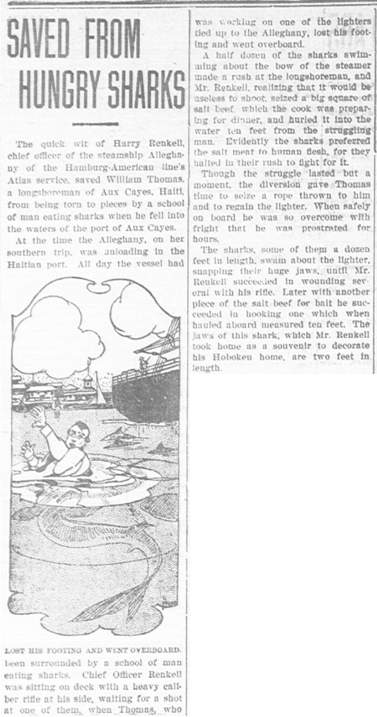To celebrate the annual phenomenon known as Shark Week, the following articles and news items come from historic Alaska newspapers, some of which have been newly made available online through Chronicling America.
These shark-related news items point to the utility of sharks as an oceanic commodity. Their skin, several note, can be made into leather, and shark oil, much like whale oil and seal oil, s well as People have hunted sharks in Alaska for hundreds of years, but the First World War marked a turning point in the use of sharkskin and shark oil.


Other stories recount in thrilling detail the “killer” nature of sharks as a stealth predator. Note the location of these stories: none take place in Alaska, yet the charged rhetoric instills the reader with a sense of fear regarding these “dangerous”, “deadly” fish.



Due to stories like these, and overfishing throughout the years, sharks now face endangerment. The following photos from the Alaska State Library Historical Collections and Archives point to the widespread sport hunting that worked to decreased the shark population in Alaska.


Here in Alaska, the Salmon Shark is the only species of shark to frequent the North Pacific waters.
Unlike its Atlantic counterparts, the salmon shark poses no real threat to humans, but is allowed as bycatch. The stigma surrounding sharks impacts the salmon shark, as the Alaska Department of Fish and Game note:
“Overfishing is a main concern due to shark’s negative image as an abundant and low-value pest that avidly eats or damages valuable salmon and wrecks gear, which encourages fishers to kill it and add to mortality from finning and capture trauma.”
Events like Shark Week help raise awareness about these majestic, misunderstood creatures. Sharks deserve our respect- and distance.




